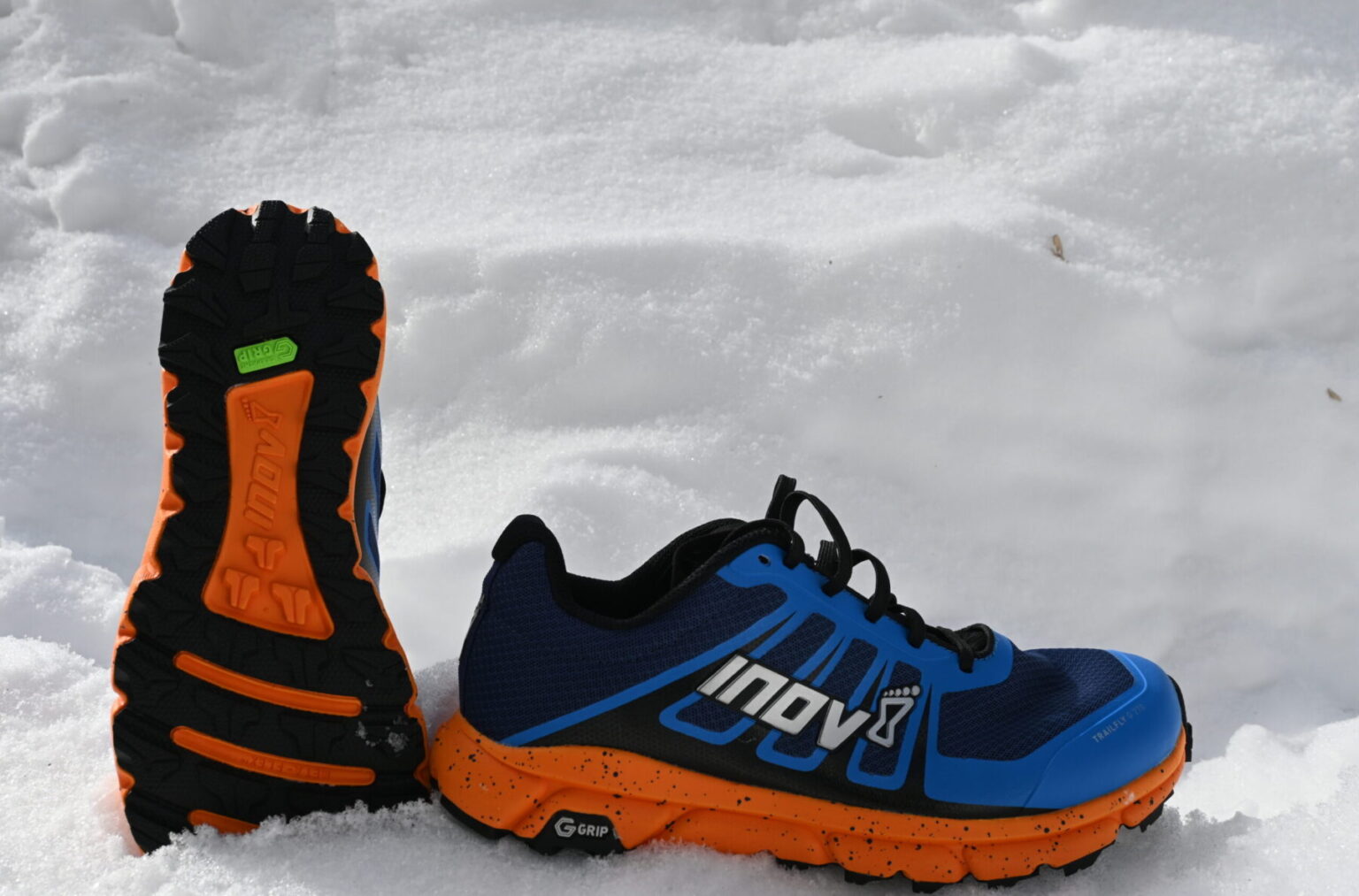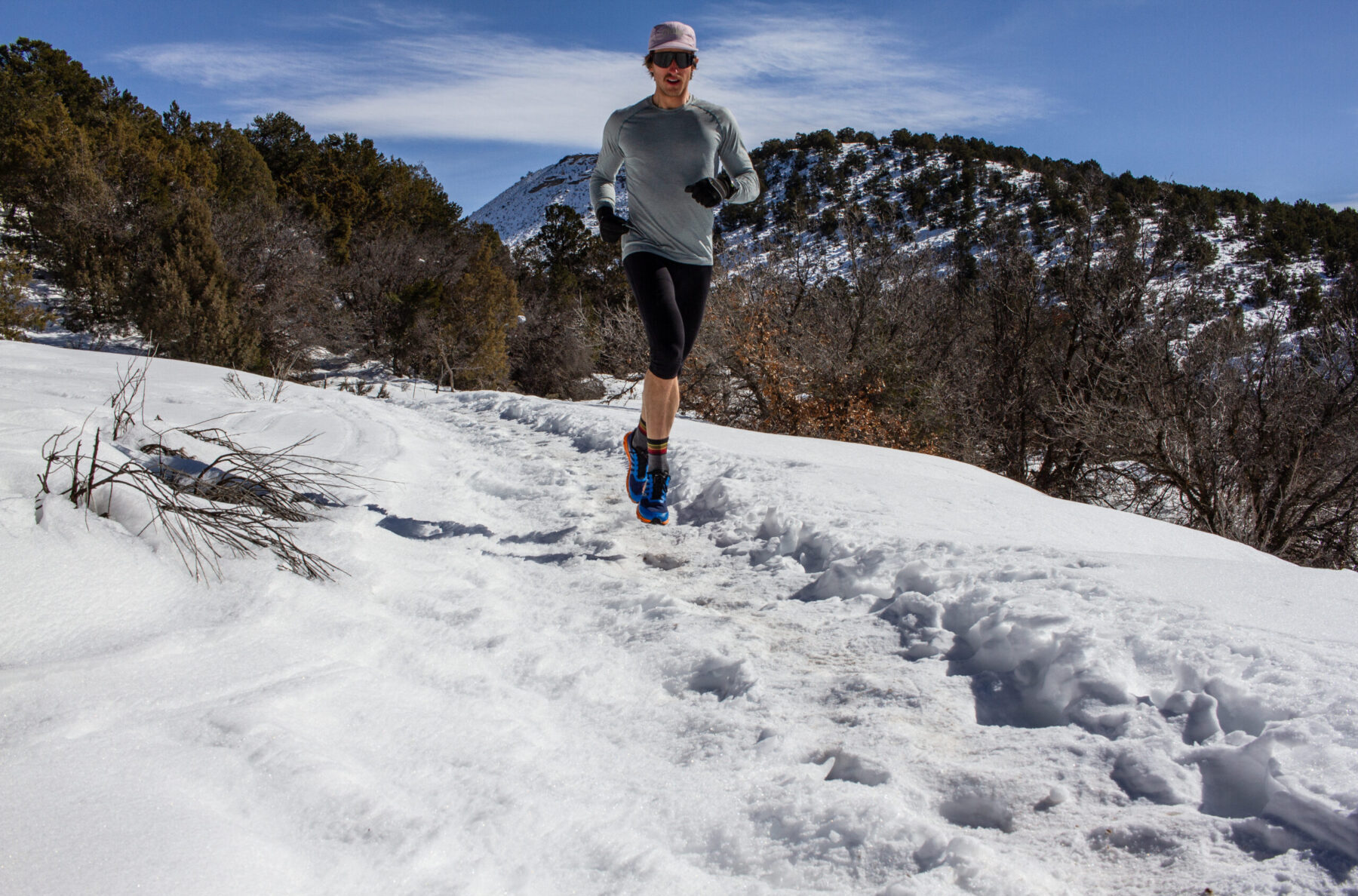Inov-8 TrailFly G 270 V2
Test Location: Durango, CO
Test Duration (so far): 102 miles
Stated Midsole Stack Height (Men’s): 12 mm (heel) / 12 mm (forefoot)
Stated Heel-to-Toe Drop: 0 mm
Stated Features:
- “POWERFLOW MAX” foam midsole
- “BOOMERANG” footbed
- Full-length outsole made from sticky “G-GRIP” Graphene-enhanced rubber
- Improved heel cup with added padding for better comfort and foot security
- Form-fitting tongue designed to hold the midfoot more securely
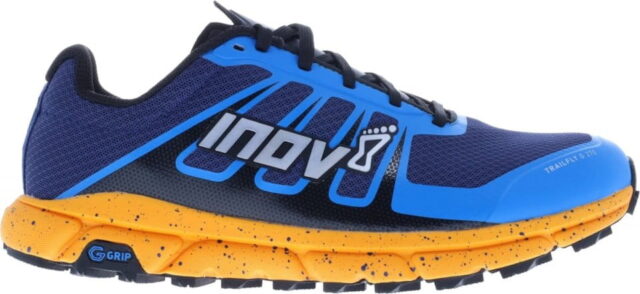
Stated Weight per Shoe (US Men’s Size 9): 270 g / 9.5 oz
Reviewer: 5’9”, 148 lbs / 180 cm, 67 kg
MSRP: $170
Size Tested: US Men’s 10 / EU 43
Intro
Inov-8, based in the UK, is known for making shoes specifically tuned for the British fells, a mountainous region in the Lake District where durability, traction, and a precise fit are crucial. But in the last few years, Inov-8 has been making strides toward diversifying their trail shoe lineup by creating a quiver of options to cover everything from long-distance ultra racing to technical and muddy mountain running. However, no shoe has received quite as much praise in the last few seasons as the TrailFly G 270, a versatile, nimble, and accommodating model built on a zero-drop platform. The previous iteration of the G 270 helped elevate Inov-8’s name from a small brand making excellent fell running shoes to a major player in the broader trail running shoe space.
Fit
Altra and Topo Athletic fans rejoice — Inov-8 is yet another brand to embrace more of a foot-shaped fit for folks who enjoy ample amounts of toe splay. The TrailFly G 270 V2 is built on the widest last Inov-8 offers, measuring a 5 out of 5 on their fit scale. I have quite narrow feet and out of the box, the shoe initially felt a bit long (which was surprising, considering that other Inov-8 models I’ve worn in the past tend to run slightly short, requiring me to jump a half-size up) in addition to incredibly spacious width-wise, which was to be expected. As I spent more time in the TrailFly G 270 V2, I was never really able to dial in the fit for my low-volume feet; the shoe always felt a bit off and at odds with the narrower lasts I prefer. Excessive room in the toe box meant my foot slid around constantly, the same issue that forced me out of a pair of Altra Lone Peaks a few years ago. Removing my own bias, I think the amount of room in the forefoot that the TrailFly G 270 V2 provides makes it a fantastic option for, as I said, runners looking for an alternative to models from Altra and Topo Athletic. I generally prefer a much more precise fit, but the TrailFly G 270 V2 did serve as a welcomed change of pace for winter running, when I tend to wear thicker socks.
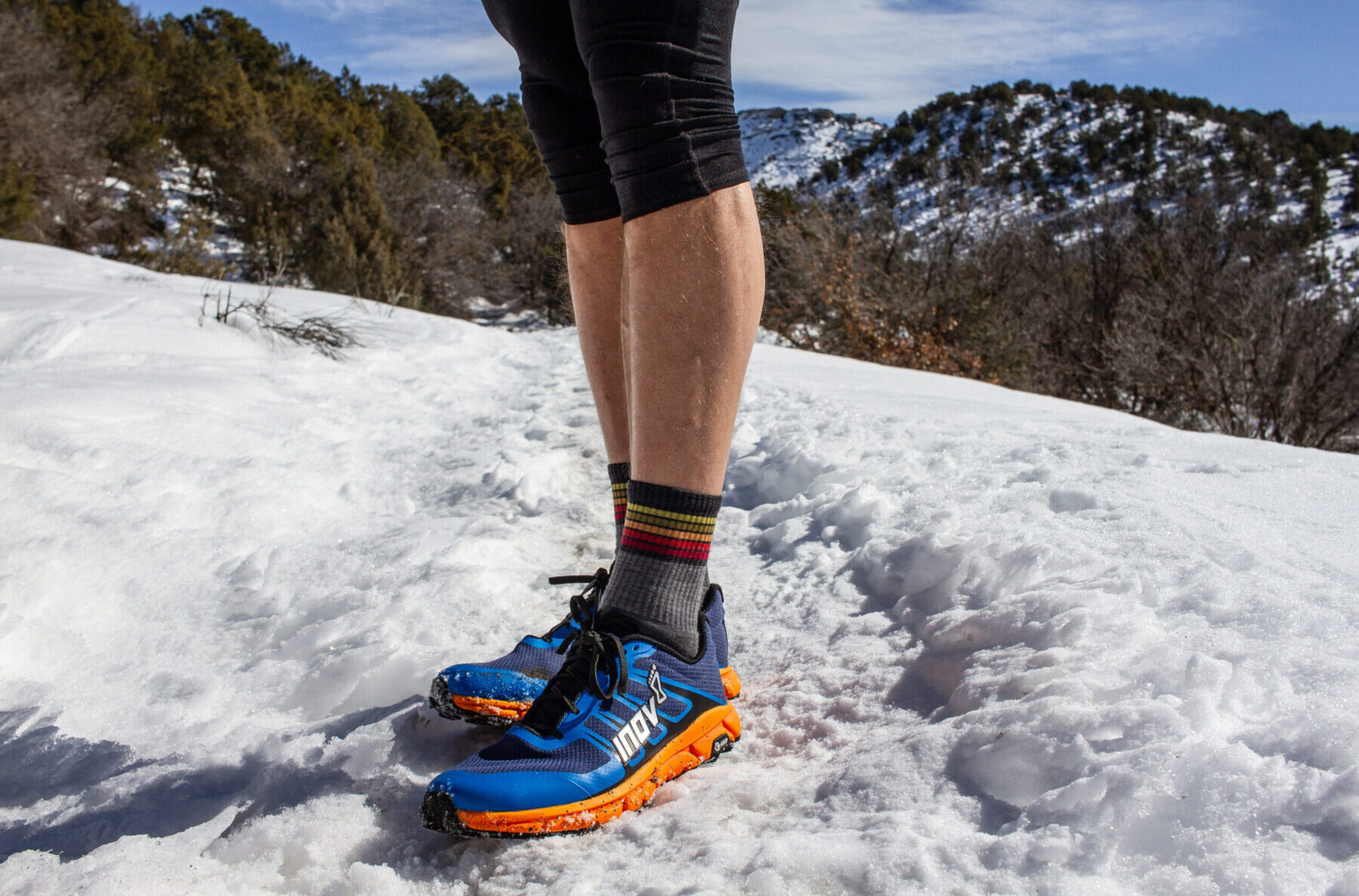
Unfortunately, the excess room in the TrailFly G 270 V2’s toe box led to a cascade of problems elsewhere on the shoe. I noticed the upper material bunching up significantly at the base of the TrailFly G 270 V2’s laces when I attempted to tighten them, likely as a result of my foot’s inability to fill out the shoe sufficiently. This ended up preventing me from ever fully locking down my midfoot without tensioning the laces to the point of discomfort. Again, for the correct foot type (i.e., normal to wide), this will likely not be as much of an issue, but for me, it contributed to a sloppy fit.
Overall, the TrailFly G 270 V2 is a fairly stripped-down shoe typical of Inov-8, a brand that generally focuses much more on durability and technical performance than on pure comfort. There is still not much in the way of inner padding or heel padding, despite both being the focus of updates from the previous version of the shoe. The lack of internal cushioning, especially in the tongue, cuts down on weight but I think it could turn away runners used to a plush, snug fit. Fortunately, Inov-8 emphasizes comfort elsewhere in the TrailFly G 270 V2 — such as in its unique “BOOMERANG” footbed and “POWERFLOW MAX” foam midsole — to make up for its stark upper, but I think including more internal material in the form of padding could have helped fill up the space left by my narrow foot.
As always, the best way to figure out if a shoe will work for you is to try it on yourself, if at all possible. Based on my experience with the TrailFly G 270 V2 and my low-volume feet, I think it’ll likely work best for those with average to wider feet.
Weight
At 270 g / 9.5 oz in a US Men’s Size 9, the TrailFly G 270 V2 is quite light for the mid- to long-distance trail shoe category. The versatile, zero-drop Altra Lone Peak 7 is a model I’d consider a good analog for the TrailFly G 270 V2, since both share the same heel-to-toe drop and a similar stack height, but as you can see, the Lone Peak 7 is quite a bit heavier. For more context, here’s how the TrailFly G 270 V2’s stated weight compares to the stated weights for some other models in its class. All weights are based on a US Men’s Size 9.
246 g / 8.7 oz — Hoka Torrent 3
251 g / 8.8 oz — Altra Superior 5
252 g / 8.9 oz — Scarpa Spin 2.0
258 g / 9.1 oz — Topo Athletic Runventure 4
255 g / 9.0 oz — ASICS Fuji Lite 2
270 g / 9.5 oz — Salomon Pulsar Trail Pro
270 g / 9.5 oz — Inov-8 TrailFly G 270 V2
275 g / 9.7 oz — Brooks Catamount 2
284 g / 10.0 oz — Topo Athletic Mtn Racer 2
289 g / 10.2 oz — Nike Terra Kiger 8
298 g / 10.5 oz — La Sportiva Bushido II
306 g / 10.8 oz — Topo Athletic Pursuit
310 g / 10.9 oz — La Sportiva Akasha 2
314 g / 11.0 oz — Altra Lone Peak 7
I credit Inov-8’s decision to use high-quality materials like Graphene for allowing the TrailFly G 270 V2 to achieve such a relatively low weight. Its reworked mesh upper ups the comfort from the first version of the shoe without adding unnecessary grams. I love to see innovations that not only strive to improve the durability of a shoe but also allow it to get by with less, which is often not an easy target to hit.
I think another good point of comparison is between the TrailFly G 270 V2 and the La Sportiva Akasha 2. The ride and protection felt quite similar between the two shoes, but at nearly 40 g lighter than the Akasha 2, the TrailFly G 270 V2 was much more fluid-feeling on runnable terrain. All in all, Inov-8 did a great job of putting together a highly versatile, well-built trail shoe while remaining acutely weight-conscious.
Upper
This is where the most significant updates to the TrailFly G 270 V2 have been made. Inov-8 likely listened to feedback from runners who considered the first iteration of the shoe to be too minimal in the way of padding in the ankle collar and tongue. This criticism, along with reports of poor upper durability, sent Inov-8 back to the drawing board in search of new designs and materials for version two of the shoe. The first change they made addressed the mesh upper; the new material they use is allegedly 25% stronger than what’s used in its predecessor. It’s also noticeably softer, which helps elevate the TrailFly G 270 V2’s overall comfort.
Now, I’ll reiterate that I personally struggled to adapt to the TrailFly G 270 V2’s upper, finding that it failed to cradle my foot shape appropriately. My narrow feet left too much material free to bunch in places like the toe box and below the laces. However, this was very much an n-of-1 issue and I suspect folks with average to wide foot types will have no such problems. That said, I do think Inov-8 could further refine how they arrange the TrailFly G 270 V2’s upper — perhaps through additional overlays or an alternative lacing system — to prevent bunching and make the shoe feel more streamlined.
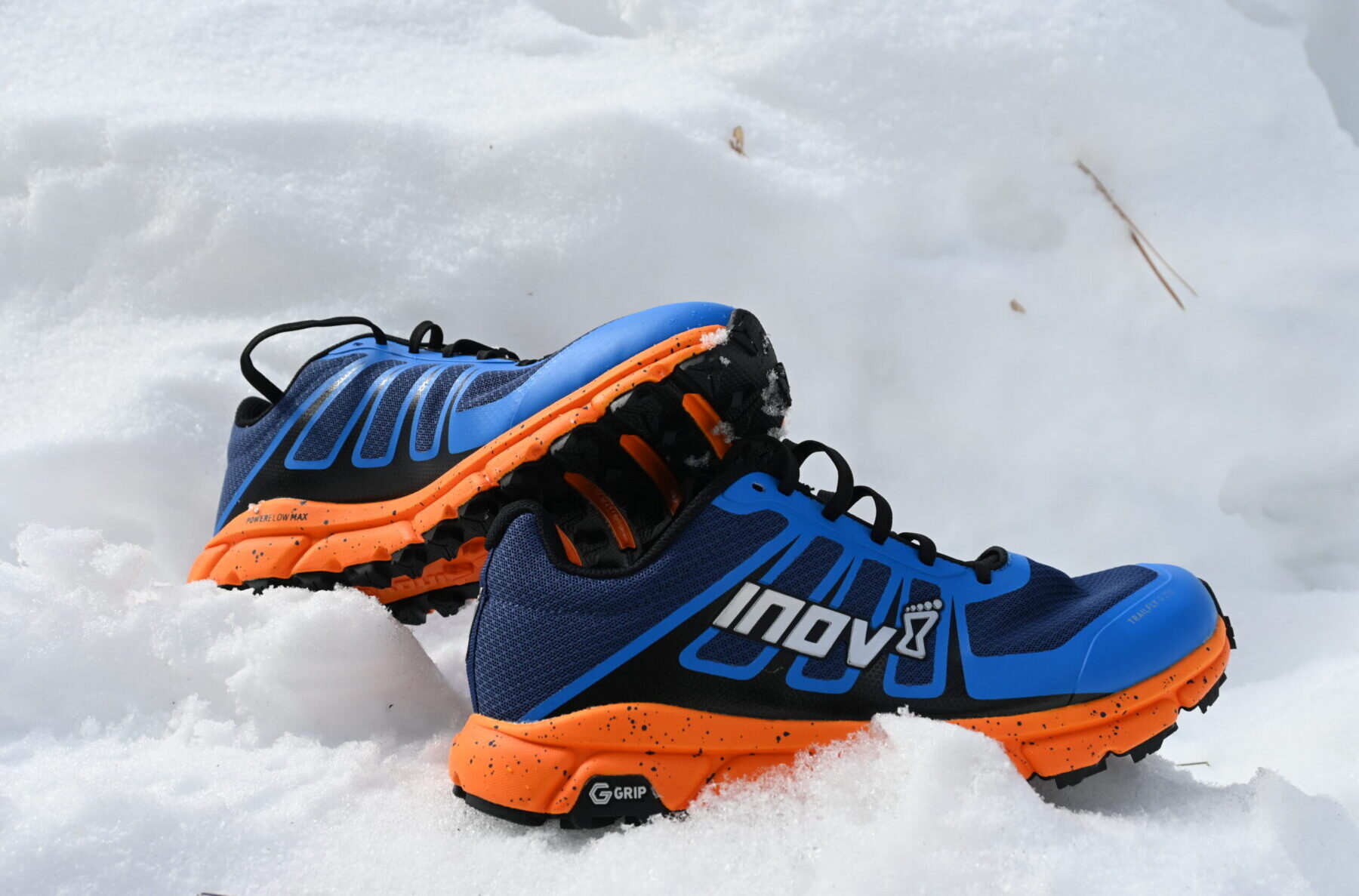
Inov-8 also redesigned the TrailFly G 270 V2’s tongue by swapping out the first version for one that I consider to be more form-fitting, with added amounts of padding around the top of the foot. It’s still quite thin in my opinion, so for those who may have been hoping for a more significant overhaul, the changes Inov-8 made are going to feel subtle. An understated tongue didn’t take away from the shoe’s performance though, and I never experienced any lace bite or discomfort over my metatarsals. Its gusseted design also helped mitigate some of the slippage by securely wrapping my midfoot.
Inov-8’s changes to the TrailFly G 270 V2’s upper are best thought of as tweaks rather than overhauls, and that extends to the slightly redesigned ankle collar, which received a bit more padding. Again, I’d still consider the shoe’s upper sparse and minimal, so if you’re looking for a model with an emphasis on interior cushioning, I’d check out options from Hoka, like the Challenger 7 or Torrent 3. Despite my issues with the midfoot and forefoot regions of the TrailFly G 270 V2, its ankle collar actually did a pretty solid job of locking down my heel, and the fact that it managed to do so with a zero-drop geometry only further impressed me.
If you were hoping for major changes to the upper when moving from the TrailFly G 270 to the TrailFly G 270 V2, the subtle redesign Inov-8 executes might fall a bit short. However, the improvements they made feel like they speak to public concerns people had with the first version, revealing Inov-8’s reception to feedback. Now if they’d just snug up the excess upper material a tad to accommodate narrower feet in V3, I’d be one happy camper (but as with all things fit-related, your mileage may vary).
Midsole
The Graphene material Inov-8 uses in their outsoles is often the most highlighted aspect of the brand’s designs, however, the TrailFly G 270 V2’s midsole was actually one of my favorite parts of the shoe. The 12 mm of POWERFLOW MAX midsole foam hit the nail on the head for what I look for in a trail shoe. It is firm but not overly firm, soft but not too squishy, bouncy but not unstable — right in my elusive Goldilocks zone. Despite a pretty modest stack height on paper, the TrailFly G 270 V2’s ride felt much more plush in practice. This has a lot to do with the shoe’s BOOMERANG footbed, a factory insole that complements the energy return from the midsole. Made from TPU, the BOOMERANG footbed also adds 6 mm of cushioning to the shoe. Inov-8 lists their shoes’ stack heights separately in their component parts, so while 12 mm of midsole cushioning seems quite thin, keep in mind that there’s also the 6 mm insole and 4 mm outsole. I was pleased to see Inov-8 take what’s normally a throwaway piece of material and make use of it. Hopefully this “hack” will eventually spread to other brands, because I think it definitely helped to improve the TrailFly G 270 V2’s overall ride.
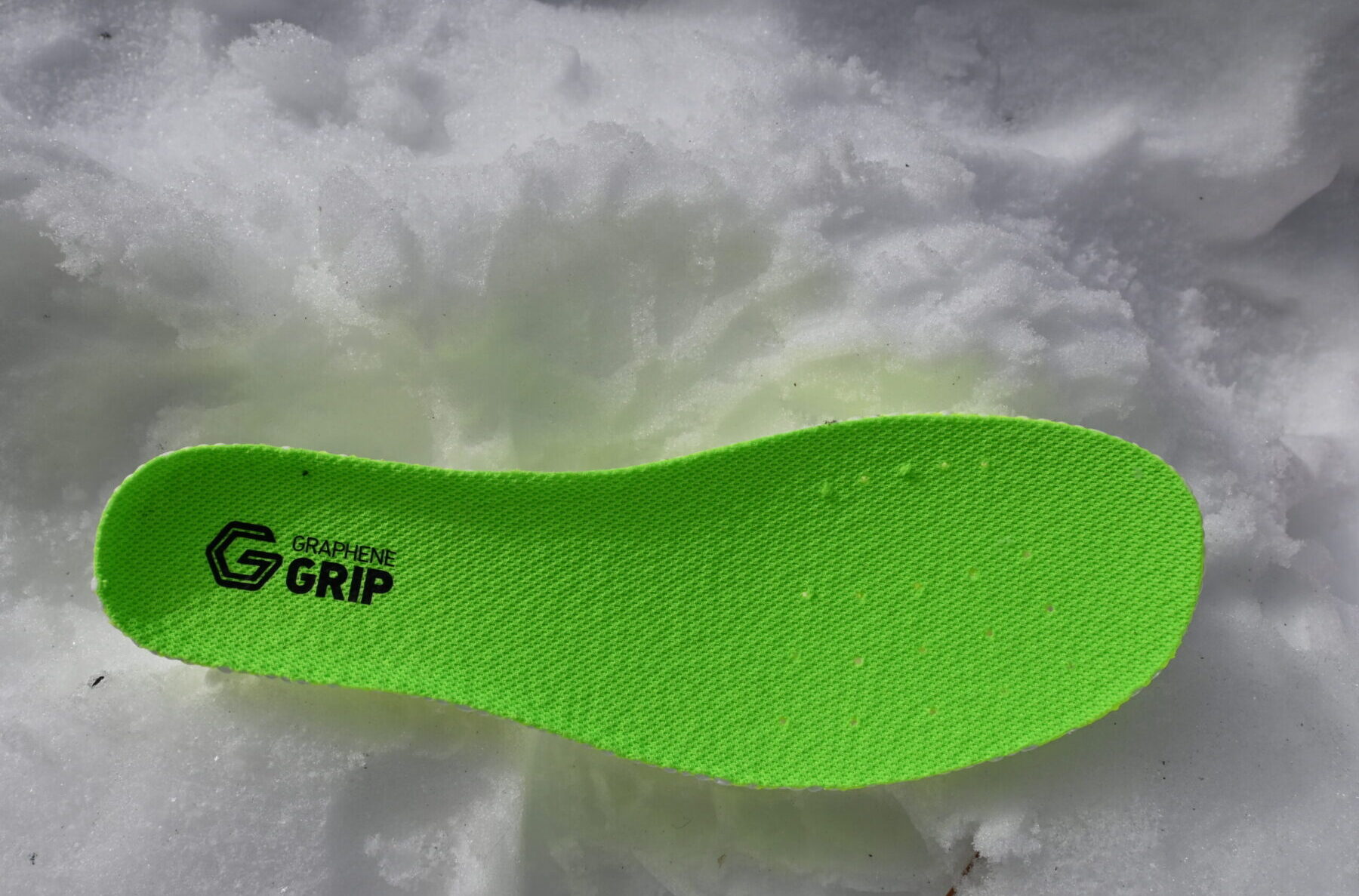
I’ve already drawn comparisons between the TrailFly G 270 V2 and the La Sportiva Akasha 2, but I think it’s worth reiterating how similar the two shoes’ midsoles felt. While the Akasha 2’s midsole is firmer out of the box, after about 50 miles or so it seemed to soften a bit and really come to life. The TrailFly G 270 V2’s midsole reached that sweet spot almost immediately. Another aspect of the midsole that I’d like to call out is its consistency. A lot of lightweight foams used in trail shoes start to deaden as they approach 100 miles, but all signs point to the POWERFLOW MAX material used in the TrailFly G 270 V2 holding up to wear for what I’d conservatively estimate to be in the 300-400 mile range. It should be noted that POWERFLOW MAX is the same composition Inov-8 used in the first version of the shoe, so if you were a fan of that model’s feel, you’re in luck.
Before moving on to talking about the TrailFly G 270 V2’s outsole, I think it’s worth touching on what I mean when I say the shoe is zero-drop and the implications that could have performance-wise. A shoe’s drop is considered “zero” when there is no difference in stack height between the heel and toe of the shoe (i.e., the shoe’s platform is level with the ground). For those new to this style of footwear, it’s worth slowly transitioning from models with a higher heel-to-toe differential in order to allow your body to adapt to new loading patterns that typically place added stress on calve muscles and Achilles.
Outsole
It’s hard not to immediately associate Inov-8 with the super aggressive, cleat-like outsole designs that appear on many of their fell-running-focused models. While the TrailFly G 270 V2’s tread is grippy by most standards, it’s relatively tame compared to models like the X-Talon 212 V2, for example. Inov-8 lines the bottom of the TrailFly G 270 V2 with 4 mm Graphene-enhanced lugs from heel to toe. As a Vibram MegaGrip fanboy myself, I’ll often use that outsole as a measuring stick for non-Vibram materials, and after testing, I’d say that Inov-8’s “G-GRIP” compound is more than competitive. It provided me with stable footing on icy, snow-covered trails around my home and even gained solid purchase during the handful of slick road miles I wore the shoes for. To me, 4 mm is the perfect lug depth on a model like this; they provide enough traction for just about every situation (aside from deep mud) and don’t get in the way or catch on firmer surfaces.
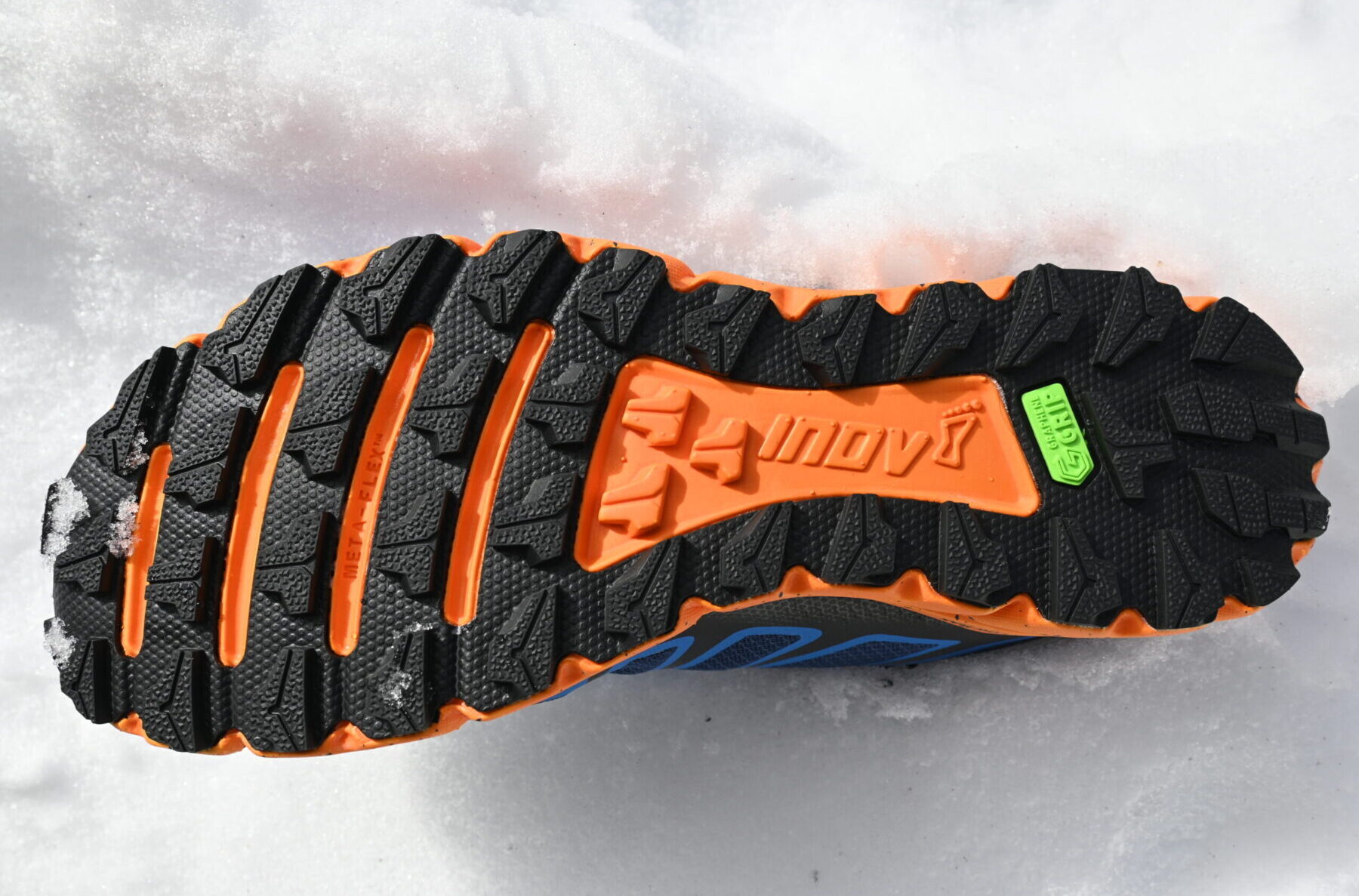
On Trail
Stuck in the snow globe that the San Juan Mountains are engulfed in this winter, the majority of my miles (so far) in the TrailFly G 270 V2 have been logged on snow-packed singletrack and forest service roads. Ideally, I would have loved to take these shoes out into the high country, but that will have to wait until June (or possibly later if this weather keeps up). What these conditions did provide, however, was a great test for the outsole’s ability to handle icy, wet conditions. I’ll cut to the chase and say that the TrailFly G 270 V2’s Graphene-enhanced rubber tread did a fantastic job keeping me upright. The 4 mm lugs sank into soft ground and snow with ease, and I never once lacked confidence cornering on snowy singletrack turns.
The TrailFly G 270 V2 struck a great balance between ground feel and protection; its moderately-stacked midsole allowed the shoe to feel nimble while still acting as a buffer against sharp rocks and roots. The BOOMERANG footbed — an ingenious and indispensable touch, in my opinion — kept my legs feeling fresh after long runs (i.e., >13 miles), so much so that I plan on swapping it over to some of my other shoes to see how it performs. The extra padding the footbed provides allows Inov-8 to keep the TrailFly G 270 V2’s stack height quite low, a boon for running on technical trails where stability is a concern. For that reason, I could see this shoe being a great option for moving quickly across talus fields and steep rock gardens, but I’ll have to wait until the snow melts to test that theory. The TrailFly G 270 V2 is by no means a maximal trail brawler that eats up miles like the Hoka Speedgoat 5 or Brooks Caldera 6. Instead, what Inov-8 delivers is a model that can dance up and down technical terrain with sure-footing without feeling sluggish or clunky on dirt roads and buffed-out singletrack.
Durability
I want to avoid making too bold a claim here, but I would be surprised to see the TrailFly G 270 V2 not make it past the 300-mile mark for most folks (and potentially much further for some). From the newly designed mesh upper being allegedly 25% stronger than the previous version to the Graphene-enhanced outsole, several parts of this shoe prioritize longevity. The POWERFLOW MAX midsole also feels as though it will retain its bounce; after 100 miles it’s just now breaking in.
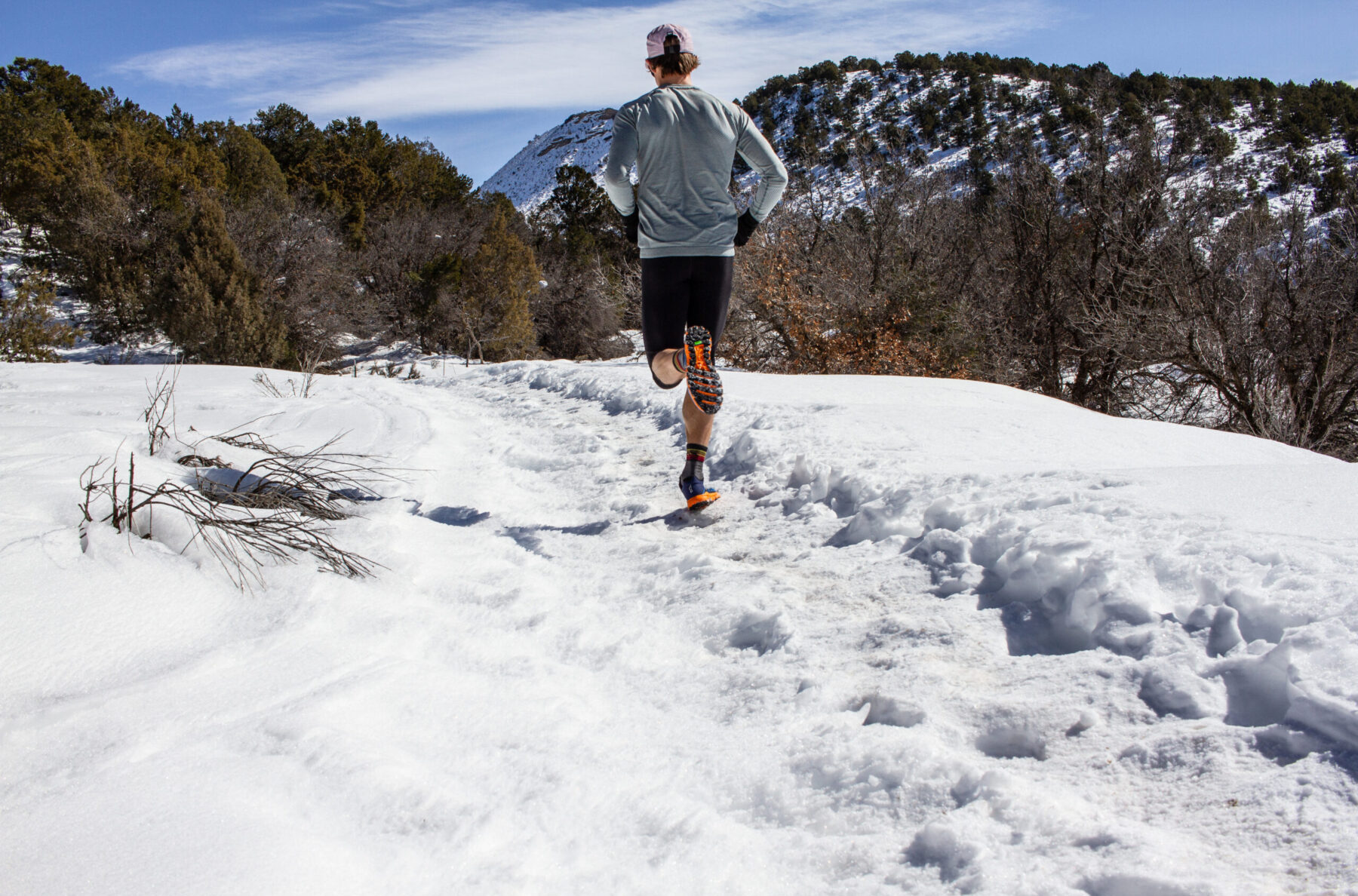
At this point in testing, I will often notice significant wear spots on the outsoles of shoes I’ve run in, as well as significant compression in the midsole. The TrailFly G 270 V2 shows very few signs of wear just about anywhere. To be fair, most of my miles were run on snow-packed trails that tend to be a bit friendlier to outsole lugs, but nonetheless, I’m optimistic about what this says about the TrailFly G 270 V2’s durability moving forward. If anything happens to change that feeling, I’ll chime back in with an update.
Who’s It For?
Looking for the feel of the Altra Lone Peak but in a package that offers what I think is better build quality and grip? The TrailFly G 270 V2 could be your shoe. It has the same zero-drop platform with a similar stack height, but should be able to handle significantly more miles, given its premium construction. The shoe’s engaging and well-cushioned POWERFLOW MAX midsole could provide a comfortable point of entry for folks new to Inov-8, and fans of the previous version will likely be pleased to see that aspect of the shoe unchanged. As a versatile option that can just as easily handle mountainous terrain as it can on non-technical trails, the TrailFly G 270 V2 will likely find a use in most peoples’ quivers. That being said, the shoe’s wide last (the widest Inov-8 offers, in fact) might deter runners with narrow feet (like myself), so if you’re typically not a fan of foot-shaped toe boxes and a zero-drop midsole geometry, it’s probably a smart idea to take a pass on the TrailFly G 270 V2. But for folks who get along with those two aspects, the TrailFly G 270 V2 is a particularly versatile trail shoe.
Bottom Line
Inov-8 clearly holds the TrailFly G 270 V2 in high esteem and put a lot of intention behind the updates they made between version one and version two of the shoe. The most noticeable changes, which come in the form of additional padding and a new upper material, subtly improve the TrailFly G 270 V2 without drastically altering its identity. While still a relatively stripped-down model, Inov-8 has loaded the shoe with premium materials that should have little issue standing up to consistent wear. Expect to see the TrailFly G 270 V2 everywhere from the start lines of 100k mountain races to backyard 5ks — it’s just that versatile. If you tend to favor zero-drop shoes with wide toe boxes and are looking for an option with a moderate stack height and tremendous traction, it’s well worth putting the TrailFly G 270 V2 on your list.

